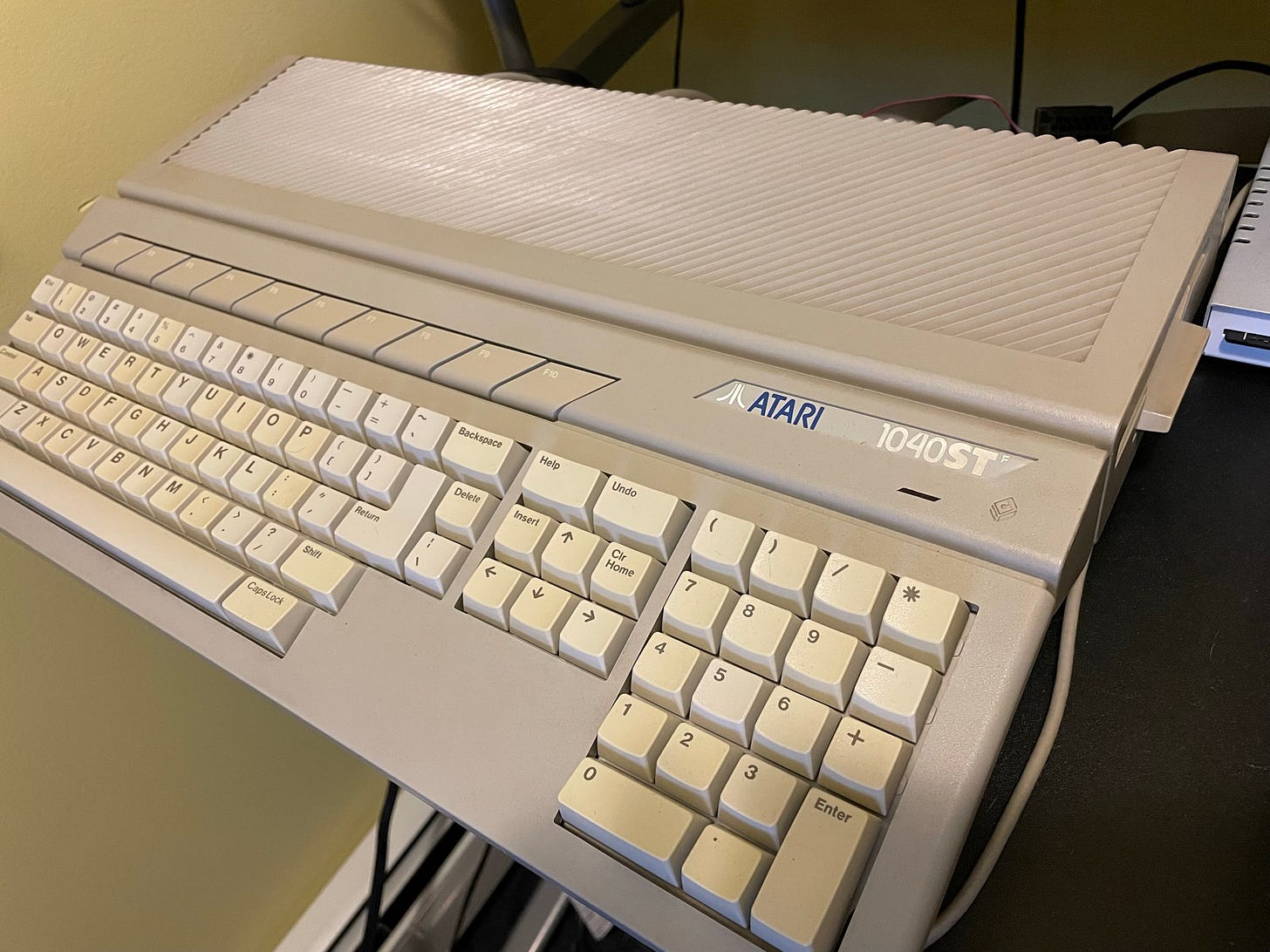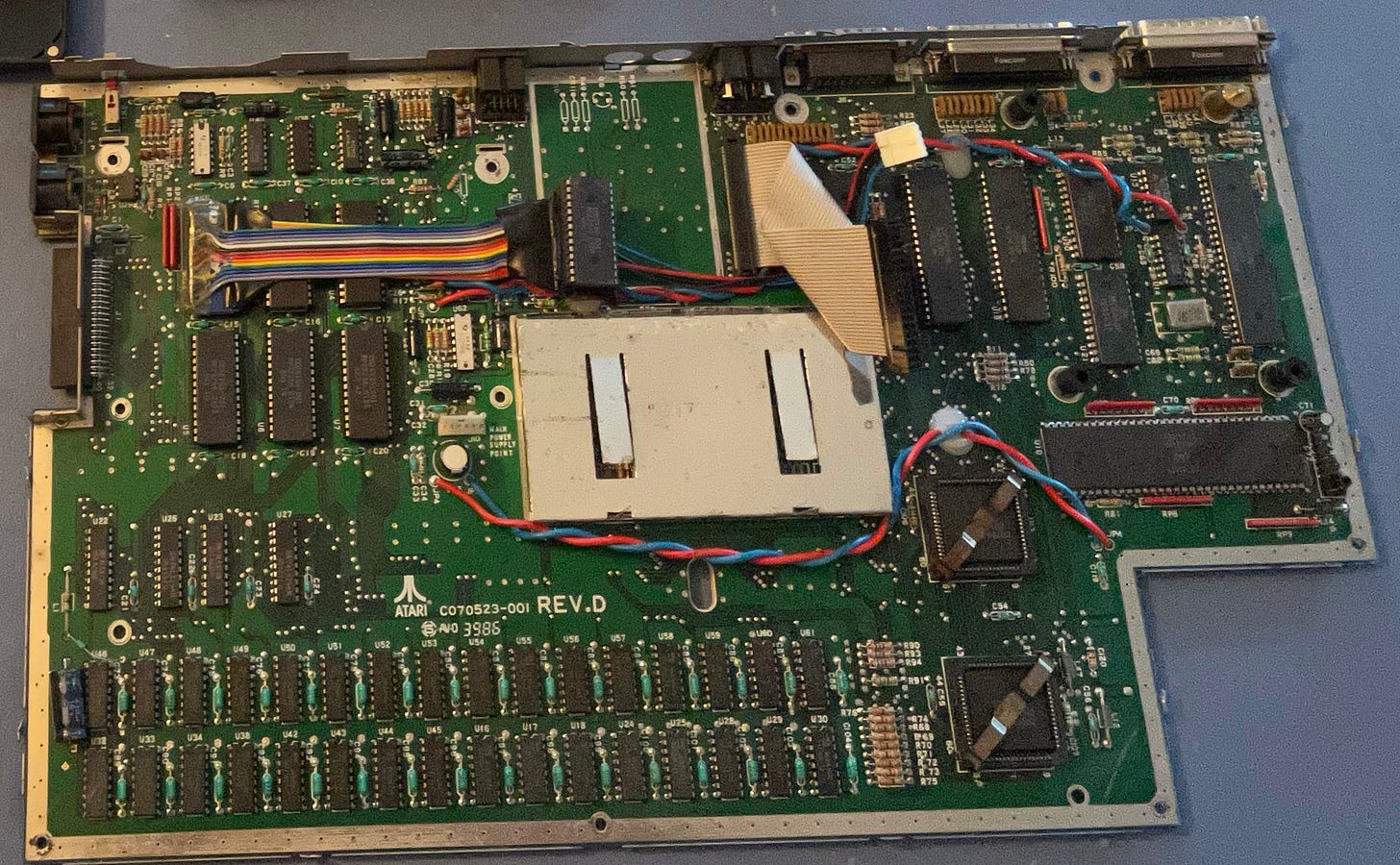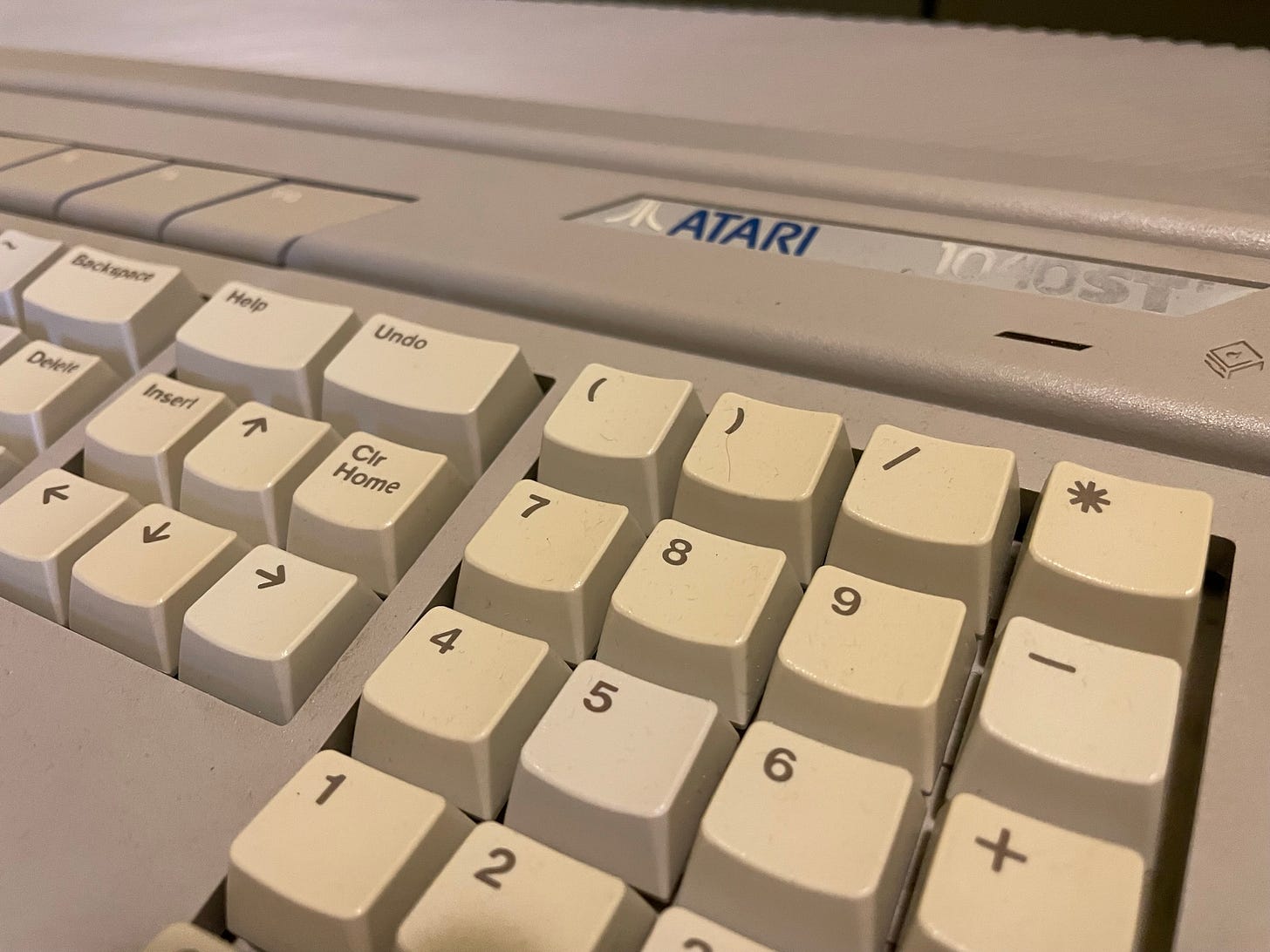Inside the Atari 1040ST
1MB and more
Thanks for reading Goto 10! This is a free article, but if you want more great retro content, consider becoming a free or paid subscriber.
The Atari ST was introduced in 1985 and the 1040ST in early 1986. It was the first computer to come with 1MB of RAM for under $1,000. The 1040ST was the most popular model of ST computers and sold from 1986 until it was replaced with the 1040STe in 1989. I had a 1040ST (purchased in 1988) and it’s the one you most commonly see on eBay.
The 1040ST design was an all-in-one keyboard computer that incorporated a 3.5” double-sided floppy drive into the main unit. It also had a built-in power supply which makes it quite heavy. The next year, Commodore aped the design with the Amiga 500.
Before jumping inside, I’d like to note that there seem to be quite a few different Atari 1040ST board designs. The two 1040STs that I have have slightly different layouts. (Do any match the Byte magazine picture)? The 1040STe, which I don’t have, would have an even more significant layout.
Here is the layout for one of my STs with board C070789-001 Rev. B:
1MB RAM (top left). This would be under the power supply.
TOS ROM (lower left). These are socketed chips. I have upgraded them to TOS 1.4, the latest version the 1040ST can use without additional modification.
RF modulator (missing) top center. My 1040ST from 1988 had an RF modulator, which was nice because it meant I could get by with just the monochrome monitor and use RF with a TV for when I wanted to play games.
The metal box in center is the Shifter graphic chip. This custom chip that generates the STs 3 graphics modes: 320x200 with 16 colors, 640x200 with 4 colors and 640x400 monochrome.
Empty area on lower right might have been intended for the Blitter, a custom chip for moving data around quickly. Atari always claimed that they would make the Blitter available as an upgrade, but I don’t believe that ever happened. Some 3rd parties produced boards that could contain a Blitter chip, but I’m not aware of anyone directly adding one to the board. The later 1040STe had a built-in Blitter, among other (minor) improvements.
In the bottom center is the Motorola 68000 running at 8Mhz, faster than the Macintosh or Amiga at the time.
Yamaha YM2149 sound chip (aka AY-3-8910). The was an off-the-shelf chip used by other computers and arcade machines of the time. It provided 3-voice sounds and also was responsible for serial and parallel IO.
MMU or memory management unit (one of the chips with a clip on it) could handle a maximum of 4MB of RAM even though the 68000 could technically handle up to 16MB of RAM.
The GLU chip (generalized logic unit, another chip with a clip on it) was a controller that provided a way for everything to communicate.
Western Digital Floppy controller (WD-1772) is in the top right and would be under the floppy drive. These could handle floppies up to 800K or so, but TOS used the standard DOS format so disks were typically about 720K (double-sided). You could get more with custom formats, but you’d lose DOS compatibility.
The 1040ST motherboard was redesigned several times throughout the years. Here’s an alternative layout of my other 1040ST with C070523-001 Rev. D motherboard, which I believe is an older design than the one above:
On this board you can see that the TOS ROMs are now in the top (under the power supply) and the RAM is spread out more along the bottom. This particular board also had a real-time clock chip attached via a cable to a TOS ROM socket. It was quite a hack job and the battery was dead, so I removed it.
Both of these boards use the 6-chip TOS ROMs, but other (probably newer) boards use just a 2-chip set of TOS ROMs.







I loved my 1040ST! I got hooked on colored Asteroids on a college friend's 520st (?) and the 1040ST was my graduation gift (paid for by my parents as I was an unemployed engineer (degree only, no experience). I later got Silent Service and hunted Japanese destroyers and the like for hours and hours!
Only ever seen one of these in the wild, my next door neighbour upgraded to it from his BBC Micro.
I said in the Acorn camp a bit longer and upgraded to an Archimedes.